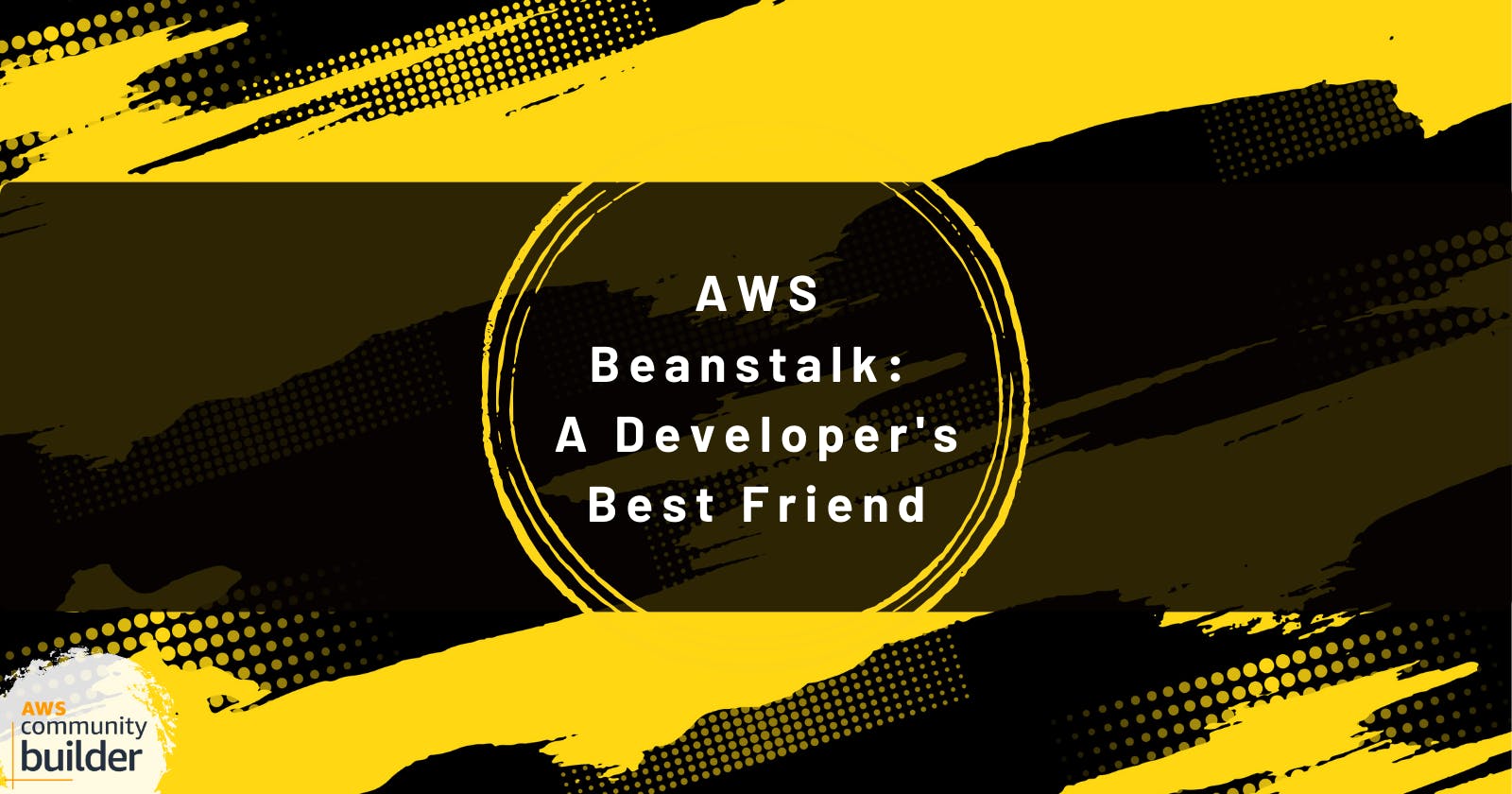AWS Beanstalk: The Ultimate Developer's Companion for Seamless Deployment and Scaling

Introduction
The problem I faced was that my application was growing, and I needed to scale it to meet the demands of my users. At first, I tried deploying the application manually, but this quickly became cumbersome, and I found myself spending more time troubleshooting than coding. I knew there had to be a better way.
The Solution
That's when I turned to AWS Beanstalk. AWS Beanstalk is a fully managed service that makes it easy to deploy and scale applications. With Beanstalk, you can simply upload your code, and Beanstalk will automatically handle the deployment and scaling for you. This meant that I no longer had to worry about the underlying infrastructure, and I could focus on developing my application.
Benefits of using AWS Beanstalk:
Beanstalk is Just like how a personal assistant handles the mundane tasks of scheduling appointments and managing emails, Beanstalk handles the tedious work of deploying and scaling your application. This frees up your time and allows you to focus on the more important aspects of your application, like writing clean and efficient code.
Ease of use: AWS Beanstalk is very easy to use, even for developers who are new to deploying and scaling applications. The platform is well-documented and easy to follow.
Automatic scaling: AWS Beanstalk automatically scales your application up or down based on demand. This means that as your application grows, Beanstalk will automatically add more resources to meet the demand. This is much like a restaurant that hires more staff when it gets busy. The restaurant doesn't have to worry about hiring new staff every time it gets busy, because the process is automated.
Scalability: AWS Beanstalk is highly scalable. As your application grows, AWS Beanstalk will automatically scale the infrastructure to support it.
Security: AWS Beanstalk takes security very seriously. It provides a secure, isolated environment for your application, which means that your application is protected from attacks and vulnerabilities.
Integrated services: AWS Beanstalk integrates with other AWS services, such as Amazon EC2, Amazon S3, and Amazon RDS. This makes it easy to add features to your application, such as user authentication, authorization, and real-time data processing.
The Results
Using AWS Beanstalk has not only made my life easier as a developer, but has also allowed me to provide a better experience for my users. By being able to quickly deploy and scale my application, I can ensure that my users have a fast and responsive experience, even during periods of high traffic.
How to Use AWS Beanstalk
Here are the steps on how to use AWS Beanstalk:
Create an AWS account. You can create an AWS account for free. Once you have an account, you will need to sign in to the AWS Management Console.
Create an Elastic Beanstalk environment. To create an Elastic Beanstalk environment, you will need to choose a platform, such as Java, .NET, PHP, Node.js, Python, Ruby, Go, or Docker. You will also need to provide a name for your environment and select a region.
Upload your application code. You can upload your application code to Elastic Beanstalk.
Deploy your application. To deploy your application, you will need to click the
Deploybutton in the AWS Management Console. Elastic Beanstalk will then deploy your application to AWS.Monitor your application. Elastic Beanstalk provides built-in monitoring for your application, including health checks, metrics, and logs.
In Conclusion
AWS Beanstalk has been a game-changer for me as a developer. It has allowed me to overcome one of the biggest challenges I faced and has given me more time to focus on developing my application. The automatic scaling, security features, and ease of deployment have made Beanstalk my go-to solution for deploying and scaling my applications. If you're a developer-facing similar challenges, I highly recommend giving AWS Beanstalk a try. It's like having your own personal assistant for your application!
Thanks for reading ❤
AWS Beanstalk itself is free,
but you will be charged for the underlying AWS resources has a pay-as-you-go pricing model, The cost of running an application on AWS Beanstalk depends on the following factors:
The number of Amazon EC2 instances that you use
The amount of storage that you use
The amount of bandwidth that you use
The type of database that you use
You can start with the AWS Beanstalk free tier. The free tier for a year includes the following:
24/7 free of specific types of Amazon EC2 compute time (Compute)
5 GB of Amazon S3 (Storage)
Amazon RDS 750 Hours usage per month (Database)
Amazon DynamoDB 25 GB of storage (Database)
Also a lot of other free serveries you can check here or You can use the AWS pricing calculator to estimate the cost of running your application here.
The free tier is enough to run a small application for free. Once you exceed the limits of the free tier, you will be charged for the resources that you use.
To start with the free tier, you will need to create an AWS account. Once you have an account, you can create a new AWS Beanstalk environment. When you create an environment, you will be able to select the free tier as your pricing option.
Thanks for reading ❤

